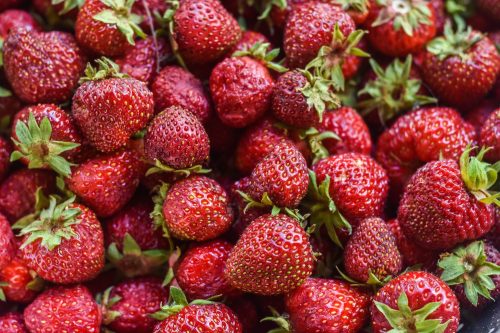 I am definitely not a professional food photographer, but my photos have improved with practice (lots and lots of it). Here are the top tips and tricks I can provide about food photography and equipment.
I am definitely not a professional food photographer, but my photos have improved with practice (lots and lots of it). Here are the top tips and tricks I can provide about food photography and equipment.
I am definitely not a professional food photographer, but my photos have improved with practice (lots and lots of it). Here are the top tips and tricks I can provide about food photography and equipment.
It is all about the light! My best suggestion for beginners is to become conscious of the strength of the light and the way that it hits the meals, and learn how to adjust accordingly. Below are some ideas for getting started.
Take photographs under natural light. Don’t use overhead lights or lamps or your own built-in flash. Ever!
Proceed to obtain the best light source. Do not feel restricted by just shooting photographs in your kitchen.
Try taking photographs from several angles. Some dishes of food look better from above (such as, pizza), or on the side (hamburgers), or at a 45-degree angle (beverages). Consider moving around the plate and taking photographs at different angles so that you can select your favorite later. Ask yourself does this napkin or busy background increase the ‘flavour’ of the picture or does it detracts from the it? Focus on what’s most important, but do not zoom in so close that audiences can not tell what the food is.
Troubleshooting Common Food Photography Difficulties
Keep reading for potential solutions.
Your photos are fuzzy. Blurry photos come from camera shake. Solutions include:
- hold your camera steadier (easier said than done)
- use a tripod with a remote so that your camera remains completely still while you are shooting
- use a faster shutter speed, which will require opening up your aperture or moving into an area with more light or,
- boost your ISO to lower the amount of light required (this will reduce image quality).
Your colours are not true to life. When you are editing your photos, if your plate of food appears really yellow, pink or blue or green, then you need to use your program’s white balance tools to repair it! Colors come alive when the white balance is set correctly. If you shoot in RAW format, you will have an easier time adjusting colour balance afterwards. Experienced food photographers use lenses that let them narrow their depth of field to highlight the topic of the photo. They then use photography applications to tweak the contrast, sharpness and levels of their photographs. Occasionally a few small edits can definitely make a picture pop.
What Camera to Use
You do not necessarily need a super fancy camera to take appealing food photographs. You can probably get by using a point-and-shoot camera for a little while if you use it well. Consult the user guide, use the macro setting and practice!
When you’re ready to get full control over your exposure and focal length, save up for a DSLR camera (that is short for digital single-lens reflex camera). It is an investment, truly!
If you can not decide between a Nikon DSLR or Canon DSLR, the differences between the two are fairly minimal. Comparable models will create photos of comparable quality, so select the best camera available in your price range.
Before you buy, read reviews and visit a local photography shop to try them out in person. If one brand’s cameras look more user friendly and feel more comfortable in your hand, go for that one. The lens that you use for food photographs are going to have more of an effect than the dSLR itself, so I suggest purchasing the camera lens and body individually.
You need more of an ‘eye’ than you need equipment. I have know people who buy expensive cameras and not know how to use them. In turn, the images they take are bloody awful. get to know your camera, get to know basic photography techniques and before long, you will be taking food photos along with the best of them.


